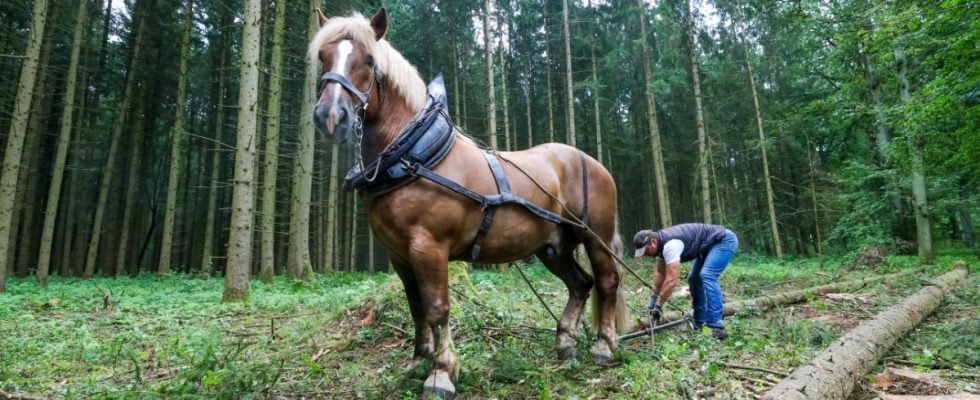Only every fifth tree in Germany is healthy, and climate change continues to affect the forest: According to the Bergwaldprojekt association, which has been based in Würzburg for 30 years, a potpourri of measures for natural forest use is needed to save the forests. For Hendrik von Riewel, forester and project coordinator of the nature conservation association, this also includes the wolf, whose hunting could help to reduce the number of game animals.
“Wild animals often find optimal living conditions in our cultural landscape,” says Riewel. “In many places there is a lack of hunting geared to ecological aspects,” and there were also no predators. So deer, wild boar and Co. multiplied almost uncontrollably. If the wolf were to return to less densely populated regions, this would benefit the forest. “It’s also unstoppable – the wolf is coming back.” It is an ecologically important and valuable key species.
According to the Federal Ministry of Agriculture, there are around 11.4 million hectares of forest in Germany. This means that around 30 percent of the state is forested – four out of five trees are diseased according to the 2022 forest condition survey. Half of the German forest is privately owned, 30 percent belongs to the city, state and federal government. The Bergwaldprojekt helpers become active in this at the request of the local forest authorities.
The German branch of the Swiss Bergwaldprojekt Foundation was founded in 1993 in Würzburg. The conservationists have made it their task to care for and preserve forests, moors, biotopes and nature parks. According to Riewel, around 4,000 people worked voluntarily for the association last year, for example on reforestation projects. According to the forester, reforestation should be done with tree species that occur naturally there, not with species from other parts of the world, just because they need less water, for example. “The moment we bring species from somewhere that are not at all adapted to the local soil conditions, for example, I end up not having a stable forest ecosystem with all the connections that make up a forest ecosystem.”
Too little rain, over-fertilization with nitrogen, no resistance to pests – many trees are doing badly. Data recently published by the Federal Statistical Office shows how badly insects affect conifers in particular. Last year, insect damage was the cause of logging caused by forest damage in 60 percent of cases. In the previous year, the statisticians had reported the record value of 81 percent. Since 2016, pest infestation has been the main cause of damaged timber felling.
In 2022, wind and storm damage also played a major role with a good quarter – their proportion can vary greatly from year to year. Since 2020, the statisticians have also recorded drought as a cause. Since then, this proportion has risen from 5.2 to 8.1 percent. Climate change has made droughts more frequent and severe. The periods without precipitation are getting longer. Because forests are only natural in a few cases in Germany, for example, they can often buffer even worse damage.
“All forest ecosystems are under massive stress. From my perspective, that’s scary because we’re just at the beginning of climatic development,” says Riewel. He calls for the forests to be made more resilient. For example, he advocates incentive systems such as subsidies to reward forest owners for their careful use of the ecosystem. “We have to use it carefully. That means we have to protect the soil. We have to protect the vegetation that is already there.” Heavy machinery in the forest compacted the soil and weakened the ecosystem. Smaller caterpillar vehicles up to 1.5 tons, cable crane systems, forestry tractors with cable winches or horses can pull trees out without damaging the ground, explains Riewel. With the help of quality seals such as Naturland or FSC, the consumer can then see which products are based on close-to-nature management.

